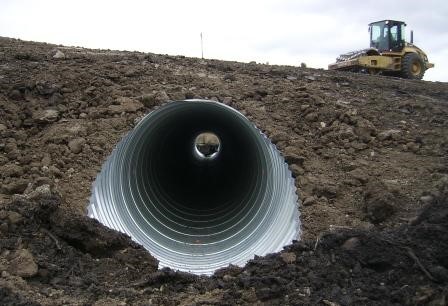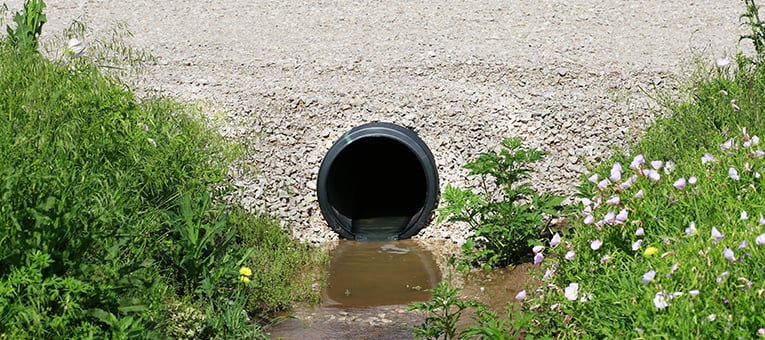Reputable Pad Construction for Your Job Demands
Reputable Pad Construction for Your Job Demands
Blog Article
Culvert Installment Made Easy: Step-by-Step Guide for Success
From choosing the proper culvert size to integrating correct water drainage procedures, each step in the setup procedure plays a vital function in the performance and longevity of the culvert system. Stay tuned to reveal the important steps and factors to consider that can make culvert installment a seamless and successful undertaking.
Choosing the Right Culvert Size
Picking the proper culvert dimension is essential for ensuring reliable water circulation and structural honesty in culvert installation jobs - Pad Construction. The size of the culvert straight affects the flow capacity of water via the structure. A culvert that is also little can bring about flooding and overflow, while one that is too huge may result in reduced water velocity, possibly creating sediment buildup and obstructions
To identify the best culvert size, variables such as the watershed area, optimal flow prices, and hydraulic performance requirement to be meticulously thought about. Estimations based on these specifications aid in choosing a dimension that can sufficiently manage the predicted water volume while reducing the danger of clogs and structural failing.
It is important to get in touch with engineering guidelines and requirements to guarantee that the picked culvert dimension meets the job demands and regional laws (Pad Construction). By selecting the best culvert dimension, job supervisors can maximize water flow, protect against potential concerns, and enhance the overall efficiency and long life of the culvert setup
Preparing the Installment Website
Efficient culvert installation requires careful preparation of the setup site to make sure ideal structural support and functionality. Before commencing the installment process, it is important to remove the website of any type of debris, plants, or blockages that could hinder the culvert's placement. Making certain a level foundation is vital for the appropriate positioning and stability of the culvert. This might involve rating the website to develop a smooth, even surface that can properly support the weight of the culvert and any kind of awaited tons. In addition, appropriate compaction of the soil beneath the culvert is essential to stop working out or changing gradually.
Moreover, it is necessary to think about elements such as dirt composition, groundwater degrees, and environmental influences when preparing the installation site. Performing a comprehensive site analysis can aid identify any prospective difficulties or threats that may influence the culvert's efficiency. By putting in the time to prepare the setup website correctly, you can aid ensure an effective culvert installment that meets structural requirements and makes sure long-lasting capability.
Placing the Culvert Appropriately

The grade at which the culvert is placed is crucial for preserving an appropriate incline for water flow. In addition, the culvert should be oriented appropriately to make sure that the inlet and outlet are in the appropriate places. Pad Construction.
Backfilling and Condensing the Dirt
Proper backfilling and compaction of the soil around the culvert is vital to Get the facts guarantee stability and prevent prospective concerns in the future. Once the culvert is correctly positioned, the next essential action is to backfill the location around it with ideal product. The backfill material need to be totally free from rocks, particles, and raw material to avoid damages to the culvert. It is suggested to use granular product such as sand or crushed rock for backfilling, as it gives great drainage and compaction residential or commercial properties.
Compaction assists in reducing the chances of settlement and ensures consistent support around the culvert. It is essential to compact the dirt evenly on all sides of the culvert to preserve its architectural stability.
Appropriate backfilling and compaction not just provide stability to the culvert however likewise assist in preventing soil erosion and preserving the Underbrush Clearing durability of the culvert system.
Ensuring Correct Drainage Integration
Integrating effective drain remedies plays a crucial role in the overall functionality and longevity of culvert setups. Proper drainage integration is important for handling water flow, avoiding erosion, and ensuring the architectural integrity of the culvert system. To achieve this, it is vital to design a comprehensive water drainage plan that takes into consideration variables such as the quantity of water expected, the topography of the area, and the sort of dirt present.

In addition, incorporating attributes like erosion control steps, such as riprap or plants, can better boost the effectiveness of the drain system. By carefully planning and executing these drain options, culvert installments can operate successfully and withstand the test of time.
Conclusion
Finally, proper culvert installation is important for preserving reliable drainage systems. By selecting the right culvert size, preparing the installation website, positioning the culvert appropriately, backfilling and compacting the soil, and guaranteeing appropriate drainage integration, success can be attained. Adhering to these actions will assist make sure the durability and effectiveness of the culvert, ultimately adding to the total success of the drainage system.
Report this page